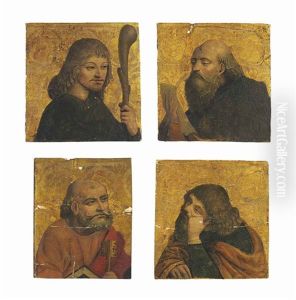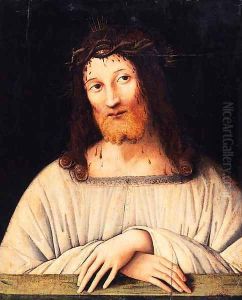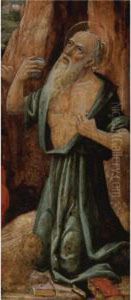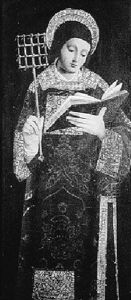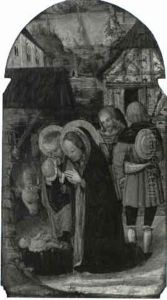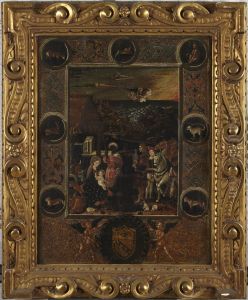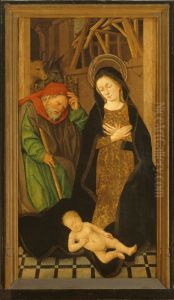Giovanni Martino Spanzotti Paintings
Giovanni Martino Spanzotti, also known as Gian Martino Spanzotti, was an Italian painter active during the late 15th and early 16th centuries. He was born around 1455, although the exact date and place of his birth are not well documented. Some sources suggest he may have been born in Casale Monferrato, a town in the Piedmont region of Italy. Spanzotti's death is similarly uncertain, but it is believed that he died around 1528.
Spanzotti is primarily associated with the Piedmontese school of painting and is known for his fusion of Northern European and Italian Renaissance artistic styles. His work reflects the influence of Flemish painters, as well as the Italian masters of his time. This synthesis is evident in his detailed landscapes, careful attention to textures and materials, and his use of perspective and chiaroscuro to create depth and volume in his compositions.
Although Spanzotti's early training is not well documented, his style suggests that he was familiar with the work of Northern artists, possibly through the exchange of artworks and ideas across the Alps. Spanzotti's most significant contribution to Italian Renaissance art is his cycle of frescoes depicting the Life of Christ in the Church of San Bernardino in Ivrea. These frescoes, which date from the late 15th century, are notable for their vibrant narrative and expressive figures, exhibiting a masterful blend of realism and emotion.
In addition to religious works, Spanzotti also produced secular paintings and was involved in the decorative schemes of various residences and public buildings. His works were once more widespread, but many have been lost or damaged over time. Despite this, Spanzotti's surviving frescoes and panel paintings continue to be studied and admired for their artistic merit and historical significance.
Spanzotti's influence is recognized in the works of his contemporaries and successors in the Piedmont region. His legacy is also evidenced by the continued interest in his techniques and compositions, which have been the subject of art historical research and exhibitions. Spanzotti remains a significant figure in the study of Northern Italian Renaissance art, particularly in the context of regional artistic developments during this period.
